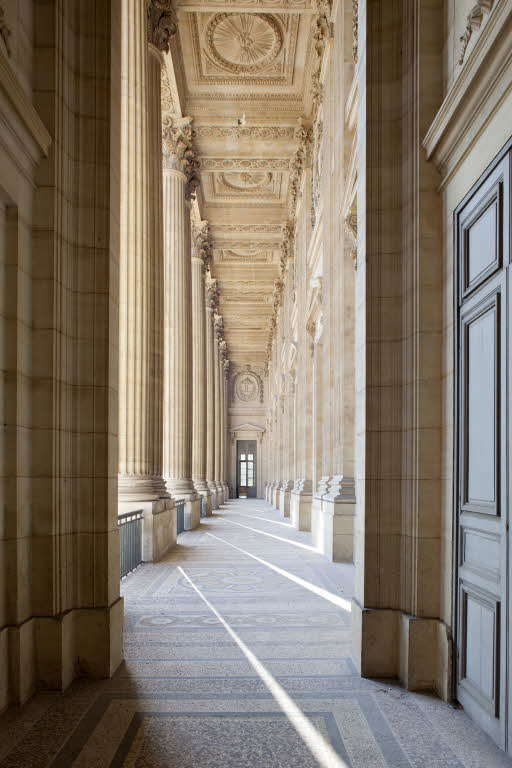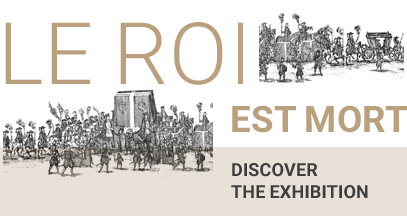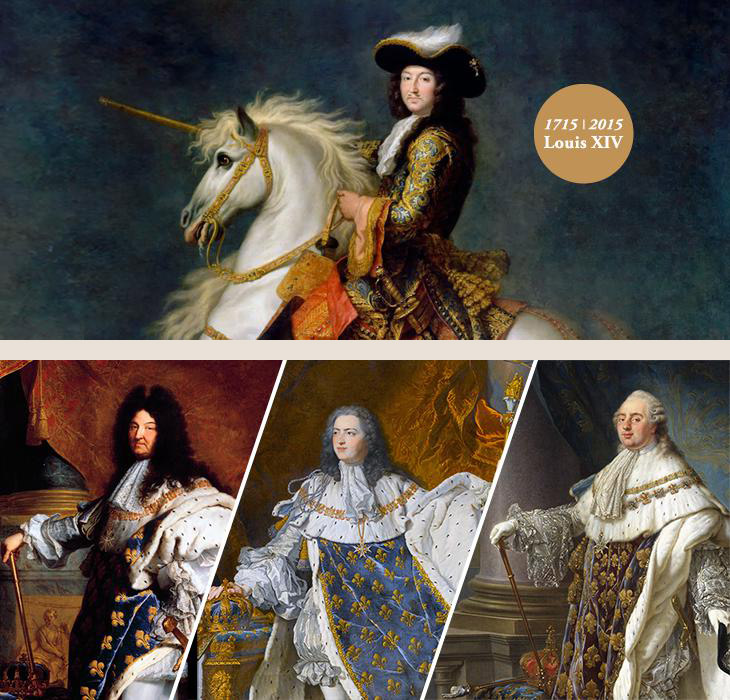The great works of Louis XIV at the Louvre
By Sophie Picot-Bocquillon
During the early years of Louis XIV’s reign, the Louvre was a theatre of major architectural transformation. Following the relocation of the young king and the Queen Mother, Anne of Austria to the palace in 1652, the winter apartments, then the summer ones, belonging to the latter, were refurbished. They were adorned with both frescoes by the Italian painter Romanelli and stucco decorations by Michel Anguier.
In addition to these spaces, Charles Le Brun, who became renowned at Versailles, was given the opportunity to create his first major decorations at the Louvre between 1662 and 1664 for the Apollo Gallery, in honour of the Sun King. Like the First Painter to the King, prior to working on Versailles, Louis XIV’s landscape designer André Le Nôtre redesigned a large garden with fountains and groves, offering a stunning view in front of the Tuileries Palace (also undergoing substantial transformation).
Furthermore, at the instigation of Mazarin, who worked primarily on the refurbishment of the Pavillon du Roi (‘King’s Pavilion’), the Louvre underwent vast territorial expansion which marked a significant milestone in the realisation of the ‘Grand Design’, an architectural project for the reunification of the Louvre and the Tuileries Palace, sought by Henri IV. This entailed the quadrupling in size of the Cour Carrée (‘Square Courtyard’), conducted by Louis Le Vau, and, on the eastern side, the elevation of a totally innovative façade which overlooked the city: the Colonnade. This gave rise to an ‘international consultation’ from which the Cavalier Bernini emerged as victor; ultimately, however, it was the formula developed by Charles Le Brun, Claude Perrault and Louis Le Vau which was retained.
When Louis XIV left the Louvre permanently, many spaces remained unfinished, without roofing or flooring. Despite the king’s disinterest and the gradual abandonment of the Louvre as a royal residence, the palace which, from then on, essentially offered government services, lodging-rooms and workshops for artists and academies, became a place of intellectual excitement during the Age of Enlightenment.
Sophie Picot-Bocquillon, Scientific librarian, service history of the Louvre, direction of research and collections.
Visually Title: Sully Wing Colonnade de Perrault, inside view of the colonnade Copyright Photo : © 2013 Musée du Louvre / Paul Maurer






















